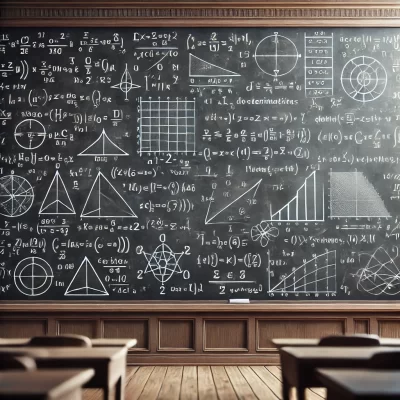
Random Equations
Trillion Dollar Equation
Veritasium has a video on YouTube explaining it here.
The Trillion Dollar Equation is a nickname for a mathematical formula that businesses use to understand how much money they can make from their customers over time. It helps predict a company’s growth by focusing on three main things:
How many customers they have (how many people are buying from them).
How much money each customer spends (the average amount of money a customer spends each time they buy something).
How often customers come back to buy again (how loyal customers are).
The idea is simple: if a business can get more customers, get each customer to spend more money, or encourage customers to keep coming back, it will grow and earn more. This equation helps companies figure out where to focus their efforts to be as successful as possible. It is called the “Trillion Dollar Equation” because using it well can lead to massive profits for big companies!
Black-Scholes/Merton Equation
The Black-Scholes/Merton Equation is a formula used to figure out the price of a financial option, which is like a ticket that gives you the right to buy or sell something in the future at a set price.
Imagine you want to buy an ice cream coupon that lets you buy an ice cream cone next week for $2, no matter how much the ice cream shop decides to charge. This formula helps figure out how much the coupon should cost today based on things like:
The current price of the ice cream cone (how much it costs now).
How much the price might change (the uncertainty or risk of price changes, called volatility).
How much time you have (the closer you are to next week, the less time prices can change).
The interest rate (the cost of waiting to pay for something later).
Whether the ice cream price is likely to go up or down.
The formula uses math and probability to combine all these ideas, helping people decide what the coupon (or option) is worth. It is widely used in the financial world for trading and investments.
Where:
C = Call option price
S = Current stock (or other underlying) price
K = Strike price
r = Risk-free interest rate
t = Time to maturity
N = A normal distribution
Fourier series
Read more about Fourier Series on Wikipedia.
The Fourier series formula breaks down a repeating function, like a wave, into a sum of simple waves made up of sines and cosines. This helps to understand or analyze any repeating pattern or signal by representing it as a combination of these basic wave shapes.
Compound Interest Formula
Used For understanding how money grows over time with interest.
A = Total amount of money
P = Initial deposit
r = Annual interest rate
n = Number of times interest is compounded per year
t = Number of years
Navier-Stokes Equation
Used in Fluid Dynamics for describing the motion of fluids like water and air. Helps in designing airplanes, predicting weather, and understanding ocean currents.
ρ = Fluid density
𝑢 = Velocity field
𝑝 = Pressure
𝜇 = Viscosity
𝑓 = External forces
Schrödinger Equation
Used in Quantum Mechanics for describing how particles behave at the atomic level.
= Wave function
= Planck’s constant
= Hamiltonian operator (energy of the system)
General Relativity
Used in Einstein’s Field Equations for explaining how gravity works as the warping of spacetime, also explains black holes, the expansion of the universe, and the bending of light by gravity.
= Ricci Curvature Tensor
= Scalar curvature
= Metric tensor
= Cosmological constant
= Energy-momentum tensor
Maxwell Equations
Used for Electromagnetism describing how electric and magnetic fields behave. Basis for understanding light, wireless communication, and modern electronics.
Heat Equation
Used for Thermal Diffusion modeling how heat spreads in a material. Helps in engineering, climate science, and understanding heat flow.
Wave Equation
Used for describing how waves travel (sound, light, or water waves). Used in acoustics, optics, and physics.
Euler Formula
Used for Connections in Math relating exponential functions to trigonometric functions. It Is Important in Bridges algebra, geometry, and calculus; widely used in engineering and physics.
